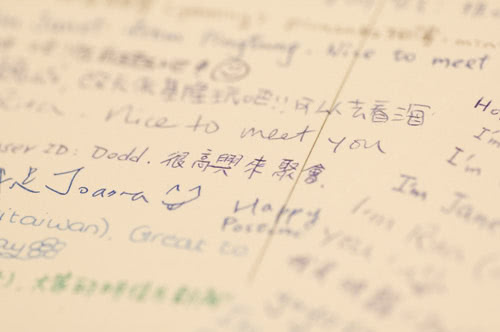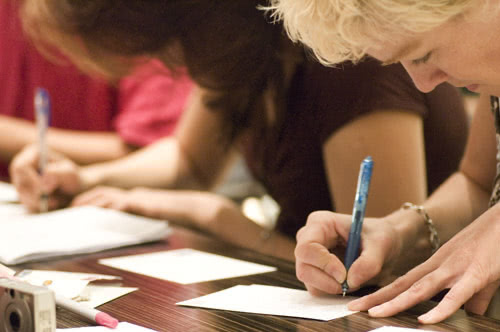We’ve just received another photo-filled report from the Little Mail Carriers, all the way from frosty Siberia! Read on their adventures in Russia from their most recent host, Kelpie.
At the middle of February when the strongest frosts were over, we arrived at PO Box in Novosibirsk, Siberia, Russia. Or, more properly, we arrived not in Novosibirsk itself, but in Akademgorodok, it’s a part of Novosibirsk, located 20 km south of the city’s center. It is the educational and scientific center of Siberia. It is located in the center of birch and pine forest on the shore of the Ob Sea. This winter had little snow, but despite that, we fell in the snow up to the waist!

There are a lot of scientific institutions in Akademgorodok, the largest of which is the Institue of
Nuclear Physics. It conducts research on elementary particle physics, accelerators, plasma and
associated with synchrotron radiation. INP has performed quite an impressive amount of work for
the Large Hadron Collider at CERN. We coudn’t go inside due to strict access control. The clock at
the entrance also shows the level of radiation, which does not exceed the norm.

And of course we visited the center of the city too. Novosibirsk is the third largest city of Russia (after Moscow and Saint Petersburg) and so called “the capital of Siberia” with population about 1.5 millions. It is also the youngest city which attained the population of a million citizens. On the main square called after Vladimir Lenin there are some high statues of labour and State Theater of Opera and Ballet (against the background). It is the largest theater in Russia and the symbol of the city. Its dome has aunique construction that supports itself without girders or columns. The ratio of its thickness to its radius is less than that of a chicken egg!

Near the theater another symbol of the city is located. The city’s legend says that the exact geographical center of former Soviet Union was marked by the Chapel of St. Nicholas, originally built in 1915 (on the left). Residents build an ice town on the Ob River in winter, where we gave ourself up to traditional Russian fun, sledge (on the upper right corner one can see line of wishing to slither).

Novosibirsk Metro bridge over Ob river is longer than 2 km and the longest one in the world!

We also visited souvenir shop with Matryoshkas and other national souvenirs and an unusual puppet show building.

Also we celebrated “Maslenitsa”, Pancake week, a Russian religious and folk holiday. At this time, people begin to see off winter and welcome the Spring. It is celebrated during the last week before Great Lent. The most characteristic food of Maslenitsa is “bliny” (pancakes), popularly taken to symbolize the sun. The red teddy bear on the left is Kooky, the main character from Czech action comedy film “Kuky se vrací”.

Here you can see a local folk festival…

…and traditional Russian winter footwear made of wool felt, “valenki”:

On next photo you can see national rag dools. These dolls are made as a talisman without the use of scissors or needles. It was believed that in the production of ceremonial dolls, the use of piercing and cutting tools is unacceptable, because they are able to hurt people. Also, these dolls have no face, because faceless dolls do not allow evil forces to move into them.

At the end of celebrating woman of straw Winter is burn out in an impressive show!
On next photo you can see the PO Box from which you usually receive mail from Kelpie if you ever did, but sometime this box has its bottom open (it’s just one of the many reasons why Russian post might be lost) and she’s forced to carry mail to another one.
At the beginning of March presidential election was carried out, Little Mail Carriers made their choice too. As you might know already Vladimir Putin has won and it will be his 3rd official and 4th total governing.

And out last stopping in Russia this time was settlement called Sheregesh, previously a mining town and now a popular winter sports resort.




























